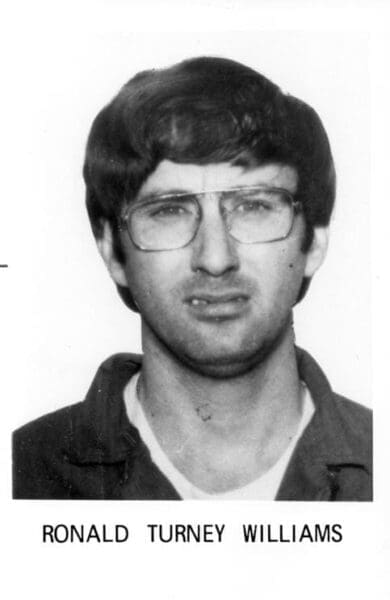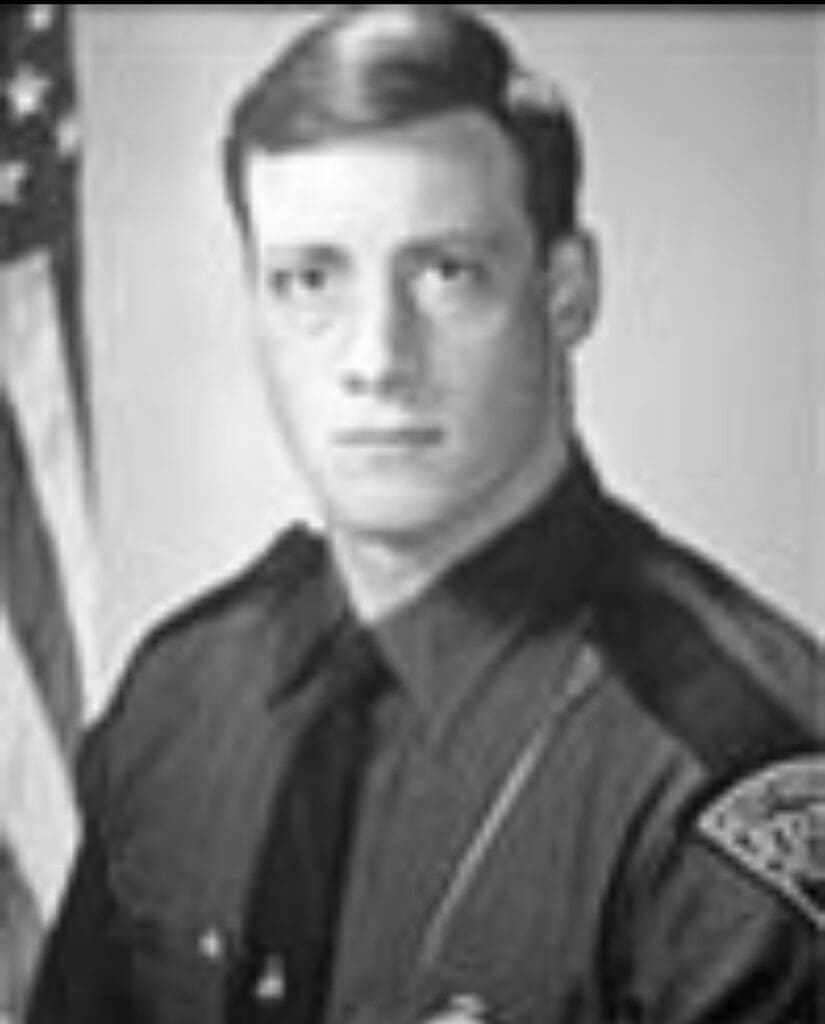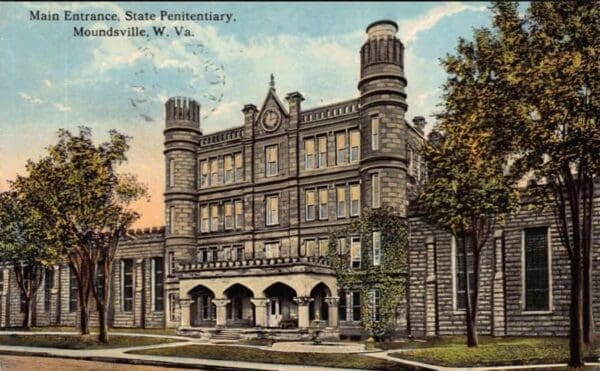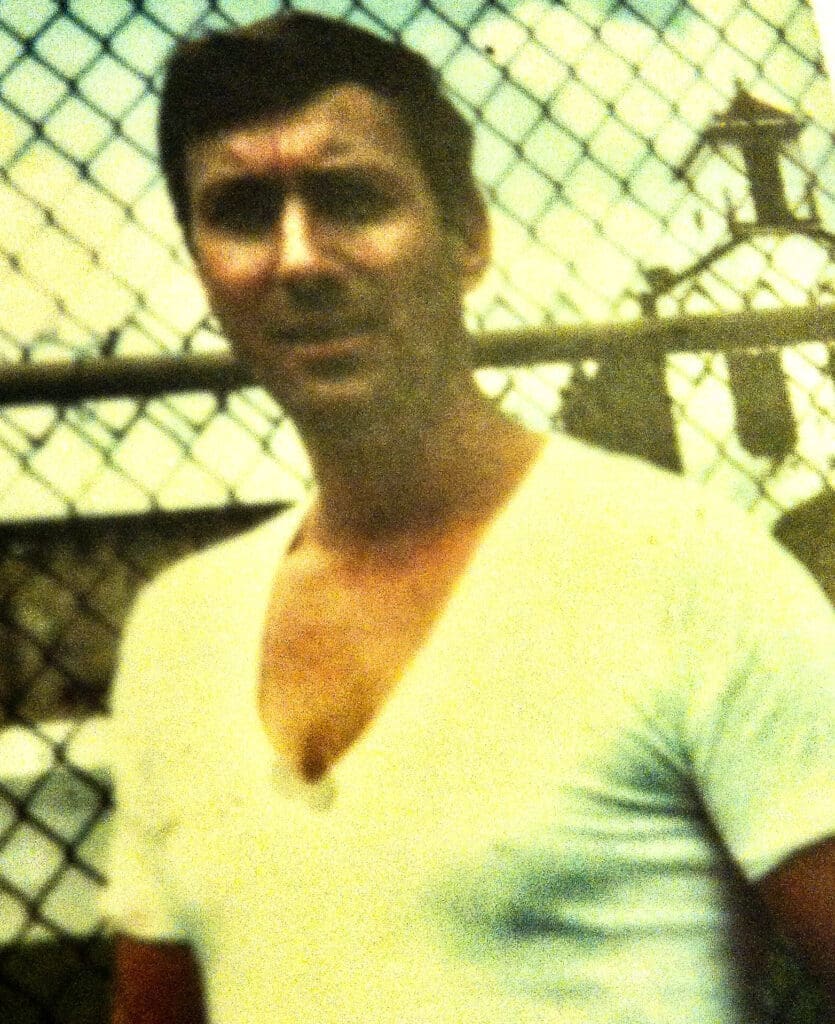(Author’s Note: This is the third installment of myth-busting legends concerning the West Virginia Penitentiary. This chapter concerns the true facts behind the murder of W.Va. Trooper Philip Kessner.)
It is commonly thought murderer Ronald Turney Williams killed West Virginia State Trooper Philip Kesner during an escape on November 7th, 1979 from the penitentiary.
This is not true as court documents and interviews from the actual escapees prove otherwise. It must be noted that this is not an attempt to make Williams look good in any way as he is a cold blooded, cold hearted, egotistical murderer. While Williams murdered two other people, Beckley Police Officer David Lilly and John Bunchek, he did not kill Trooper Kesner. This narrative will describe the events of the escape and reveal the true killer.
On Wednesday, November 7th, 1979, Harold Gower approached Donald Layne and told him Ronald Williams and Jack Hart wanted to talk to him and it was very important. They said, “Everything will be ready in fifteen minutes.” A little before 8 p.m., inmates started casually congregating outside of the command post.
Correctional Officer John Villers served at the penitentiary for many years and was six feet tall and weighed 140 pounds. Gray hair covered his head as he was 61 years old at the time of the escape of the prisoners. The inmates and other correctional officers affectionately referred to him as “Pop.”
Williams, Hart, and Layne knew they could overcome Correctional Officer Villers as he suffered from heart and breathing problems. The plan was to subdue Villers and prop open the door of the control cage. If the metal door to the control cage was locked, Officer Villers might have been able to halt the exodus of escapees.
Williams and Hart’s plan commenced once Correctional Officer Villers was distracted. At that point, Hart was the only one who possessed a weapon as he carried the smuggled .32 caliber pistol. Hart served as a barber for the prison and the barber shop was located just east of the Command Post on the other side of the 98 Corridor.
It was common for a prisoner to work as the barber to cut the hair of the other prisoners and he would keep the hair searing tools in the Command Post. Because Hart was the barber, he had open door access to the command post.
Forty-one years old Correctional Officer Jerry Daff was five feet eight inches tall, weighed 130 pounds, and worked at the penitentiary for a few years. He was making sure the penitentiary count was correct when he was startled by the shaking door.
Hiding the gun underneath a sweater vest pullover, Hart rattled the metal electronic door leading from the 98 Corridor to the Command Post. Layne heard the snapping click as it opened as Officer Jerry Daff pushed the circular button to activate the opening of the door at 8:05 p.m. Hart hastily entered first and stuck a smuggled .32 caliber pistol at Correctional Officer Daff’s head and barked at him, “Don’t make any moves or I’ll blow your head off.”
Inmate William Burd was cleaning the Command Post when the inmates first entered and was disconcerted by the sudden movement. He reported he saw Hart pull up his sweater vest, grab the .32 caliber gun from his leather belt, and place it firmly to Officer Daff’s head.
At this point, Williams and several inmates flooded into the Command Post from the 98 Corridor. Harold Gower was one of them and he was holding a large, wooden broomstick in his hands to prop open the door so others could escape. As Hart held Officer Daff hostage with the loaded gun, Donald Layne demanded Officer Daff tell them what key opened the command center door. This door was the last exit leading to the visiting waiting room that stood between them and the front door.
Officer Daff stated, “I can’t tell you which key it was.” At this point, Donald Layne brandished a knife and pressed it firmly on his throat exclaiming, “Let’s kill him.” Fearing for his life, Officer Daff showed the inmates the key that unlocked the door granting them another step toward their freedom.
Without hesitation, the key hanging on a metal nail behind a desk was snatched.

Stop That Car!
Hart continued to hold the gun upon Officer Daff as Layne unlocked the steel door. With this obstacle overcome, Jimmy Collins and Thomas Burton rapidly rushed to the elevated gun cage where Correctional Officer John Villers was stationed. The gun cage door should have been closed and locked, but when it was secure, there was terrible ventilation which made it hard for the officers to adequately breathe.
Burton forcefully kicked the boxed gun cage door wide open granting full access to their future freedom. Correctional Officer Villers attempted to grab his penitentiary-assigned service pistol out of its leather holster, but Jimmy Collins harshly grabbed his hand and prevented him from doing so. Collins reached in and tightly clenched the .38 caliber pistol and started pushing the control buttons that opened the front door exiting the penitentiary. Correctional Officer Villers was dragged out of the gun cage and placed in front of the group of fleeing inmates.
There was a lengthy span of time where all the exits of the new administration building were completely open and hundreds of inmates could have escaped from custody of the maximum-security prison. With the doors open, inmates David Worley, Harold Gower, John Keenan, Shirley Adkins, and Williams ran out onto Jefferson Avenue, the road that runs from north to south and is one of the main streets of Moundsville.
Hart continued to hold Correctional Officer Daff at gunpoint as they made their way to the concrete stretching sidewalk that runs parallel to the prison with Correctional Officer Villers being dragged along as well.
The jumpy inmates started yelling at the correctional officers. “Where is your car?”
Correctional Officer Daff responded: “I don’t have a car.”
Layne threateningly retorted, “You son of a bitch, you better have a car.”
Other inmates continued badgering him. “Where’s your car?”
At 8:15 p.m., a hardtop 1977 Plymouth, two doors, painted blue on the bottom and white on the top part, Sport Fury drove south on Jefferson Street in front of the prison. One of the prisoners excitedly yelled, “Stop that car!” The escaping mob ran toward the trajected path of the car and forcefully shoved Correctional Officer Daff in front of the moving vehicle.
Inside the car were a young couple whose identity were not known at the time. The driver, who was West Virginia State Trooper Philip Kesner, vigorously stomped his foot on the brake to avoid striking and seriously injuring Sgt. Daff. The occupants of the car were he and his wife, Connie, as they visited friends and were now returning home. Due to State Trooper Kesner’s skillful maneuvering, he managed not to hit Correctional Officer Daff.
As he was violently thrusted toward the Fury, Correctional Officer Daff landed on the front left fender of the automobile. Mrs. Kesner remembered that a large group of men started running toward the car and then Hart savagely jerked the driver’s side door open.
State Trooper Kesner, a physically fit and strong man, was rigidly gripping the steering wheel tightly to thwart their devious plans and Mrs. Kesner heard one of the inmate’s spew, “Don’t f*** with him, kill him.”
Hart and Collins were the first inmates to grab hold of State Trooper Kesner and then Layne took hold of his right arm to assist in his violent and abrupt removal.

Double Cross
Correctional Officer Daff reported that Jack Hart and Donald Layne jerked State Trooper Kesner out of the car by grabbing his coat and sadistically spewing, “Get the f*** out of the car.”
In cold blood, State Trooper Kesner was pointblank shot by Jack Hart.
Harold Gower was the first inmate that entered the Kesner’s vehicle after Officer Kesner was forcibly removed. He briskly turned toward Mrs. Kesner and snapped, “Get out of the car, get out of the car.” Mrs. Kesner tried to exit as fast as she could, but it wasn’t fast enough for Gower. He grabbed the back of her head and with a fistful of her hair, shoved her out of the car. She landed face down upon the rigid concrete surface of Jefferson Avenue. Hart, Burton, Morgan, Collins, and Layne piled into the car with Gower.
Even though he was shot, State Trooper Kesner quickly rose to a standing position outside of his hijacked car. He swiftly drew a .38 caliber revolver from his concealed ankle holster and shot six rounds pointblank into the hijacked vehicle. Gunshots rang out and breaking glass echoed through the air. During this chaotic time, Mrs. Kesner ran to safety near the rear of the car. State Trooper Kesner waited for his wife to safely evade the line of fire that was to begin.
Although he was profusely bleeding, State Trooper Kesner’s thoughts were those of saving his wife from the vicious escapees. His last heroic act was to protect his wife and to fulfill his sworn duties as a law enforcement official.
Several shots by State Trooper Kesner penetrated the metal exterior of the vehicle’s door. Two bullets struck houses across the street and one of the shots made its way into the body of Jimmy Collins. As Donald Layne frantically dove over the front seat of the car into the back seat, he was also struck in his left side by the .32 caliber revolver. This was the gun that the prisoner, Jack Hart, was holding. In the melee, Jack Hart shot a fellow escapee.
Jack Hart carried the smuggled .32 caliber ‘Savage’ gun with the serial number 241728 etched into it. Hart held it with the safety off and a live shell in the chamber ready to fire. Several witnesses, including inmates who escaped, made statements that Hart was the sole possessor of this gun.
Hart claimed during the chaos he gave the gun to Jimmy Collins but later recanted his statement attempting to implicate Williams as the shooter. Sergeant Daff told State Troopers hours after the escape, “He (Hart) was the one with the gun and he didn’t give it to anyone.” Since Williams previously murdered a Beckley Police Officer, Hart thought he could pin this nefarious crime on him so he would not be charged with it.
In inmate David Effingham’s statement to the police, he stated Jimmy Collins was the last one to possess the gun firing the fatal blow, but other inmates claimed that it was either Hart or Layne. Other inmates reported that Harold Gower was the final possessor of the .32 caliber pistol as they claimed that he (Gower) emptied all six shots toward State Trooper Kesner hitting the inside of the car door once and Donald Layne. An undisputable fact is that this gun was the one that caused the fatal wound to State Trooper Philip Kesner.
Contrary to popular belief, Williams was not at any time near State Trooper Kesner’s car or the fatal activity that took place around it. When Burton and Collins first overwhelmed the gun cage and snatched Correctional Officer Villers’s .38 caliber revolver, Collins handed the revolver to Williams and was ordered by Hart to say, “Give this gun to Donald Layne.”
Layne was agitated and angry with Williams as he didn’t give him the gun that Collins gave him but kept it. Williams ran toward the car he previously arranged to be on Jefferson Avenue. In a statement to police, Layne said he saw Williams get into a car, start the engine, and drive north on Jefferson Avenue by himself.
Williams gave specific instructions for his getaway car to be parked on the right side of Jefferson Avenue so that he was closer to the prison’s front door and pointed toward Wheeling. Layne was furious because Williams had a gun he was supposed to have and he left without the other inmates.

One Fatal Shot
Williams did possess the .38 caliber revolver but didn’t fire it. One of the escaping inmates, Thomas Burton, reported that he was “sure” Williams possessed the .38 caliber gun which was the pistol taken from Correctional Officer Villers. It was easily identifiable because it had been issued to Officer Villers by the penitentiary and “W.V.P.” was clearly marked with deep engraved etchings into the weapon. It was a .38 caliber Smith and Wesson revolver with a four-inch barrel with the serial number, 5K87049.
After multiple shots were fired, Mrs. Kesner saw State Trooper Kesner lying on his back on the street and crawled over to him. His final words to her were, “I’ve been shot in the chest.” John Terek was an emergency responder for the Moundsville Fire Department and was the first on the scene. He offered the trooper medical assistance.
He carefully opened State Trooper Kesner’s shirt and saw a penetrating wound in the upper left side of his chest. At that time, Trooper Kesner was still alive and had a strong pulse and breathing. He was quickly loaded onto a stretcher and rushed to the Reynolds Memorial Hospital in nearby Glendale, West Virginia.
State Trooper Kesner bravely died from one .32 caliber gunshot wound and was pronounced dead at 8:53 p.m. His mortality was brought on by the bullet entering the left side of his chest and passing through the anterior and posterior wall of the left ventricle of his heart. He was loved by many and his brief career ended too soon.
After the mayhem in front of the penitentiary occurred, six inmates got into the car and frantically fled the scene. Jack Hart, Thomas Burton, David Morgan, Harold Gower, Jimmy Collins, and Donald Layne drove south in the car while nine other inmates fled on foot.
Ronald Turney Williams is a sadistic murderer who took the lives of at least two innocent people but was not at the scene of State Trooper Kesner’s death. After absconding from the prison, he ran to the south end of the prison where his Brother-in-law, Bill Hicks placed a getaway car the day before. Hicks smuggled in the keys to the car in a fast-food container during contact visitation on November 6h and all along, Williams knew he was immediately heading there after the escape.



